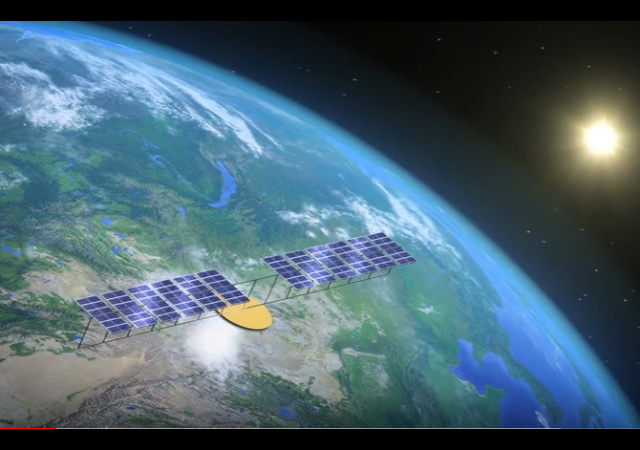Harvard Prof Believes He’s Found Fragments of Alien Technology
“We found ten spherules. These are almost perfect spheres, or metallic marbles.”

There sure has been a lot of alien news in recent months. You can see a picture in a tweet below.
From CBS News via Yahoo News:
Harvard professor believes he’s found fragments of alien technology
Harvard professor Avi Loeb believes he may have found fragments of alien technology from a meteor that landed in the waters off of Papua New Guinea in 2014.
Loeb and his team just brought the materials back to Harvard for analysis. The U.S. Space Command can confirm with almost near certainty, 99.999%, that it came from another solar system. The government gave Loeb a 10 km (6.2 mile) radius of where it may have landed.
“That is where the fireball took place, and the government detected it from the Department of Defense. It’s a very big area the size of Boston, so we wanted to pin it down,” said Loeb, “We figured the distance of the fireball based off the time delay between the arrival of blast wave, the boom of explosion, and the light that arrived quickly.”
Their calculations allowed them to chart a potential path of the meteor. Those calculations happened to carve a path right through the projected 10 km range that came from the US government. Loeb and his crew took a boat out there called the Silver Star. The ship took numerous passes along and around the projected path. The researchers combed the ocean floor by attaching a sled full of magnets to their boat.
“We found ten spherules. These are almost perfect spheres, or metallic marbles. When you look at them through a microscope, they look very distinct from the background,” explained Loeb, “They have colors of gold, blue, brown and some of them resemble a miniature of the Earth.”
Their composition analysis showed that the spherules are made of 84% iron, 8% silicon, 4% magnesium and 2% titanium, plus trace elements. They are sub-millimeter in size. The crew found 50 of them in total.
A Harvard professor believes he may have found fragments of alien technology from a meteor that landed in the waters off of Papua New Guinea in 2014. https://t.co/G5ZejHMUKo
— CBS News (@CBSNews) July 7, 2023
Donations tax deductible
to the full extent allowed by law.








Comments
These types of spherules (1mm or less in size) are found all over the earth in the debris of meteorite impacts and are also produced (from what I’ve read) as byproducts of various human activities as well. In meteorite impacts they arise from the condensation of vaporized rock (both earth rocks and the meteor itself). If I understand what I’ve read elsewhere, these spherules would not be fragments of alien technology per se, but rather condensed bits of vaporized metal from such alien technology.
I’m gonna go out on a limb and predict that these will be found to have a natural origin, even if the original meteor is eventually presumed to have come from outside our solar system.
Loeb has been hunting aliens for years. He sees them in every passing rock. If/when the day comes that he’s actually right, no one will listen because he’s burned up all of his credibility.
Aliens would make perfect spherules. You can get “almost” perfect anything any time you want from China (11¢ each from Temu).
Metorite hits, explosion throws molten fragments of meteorite and substrate into the air, when free falling back to the to surface they cool into spheres because that’s what happens when high-density fluids freeze quickly in freefall. This is first year astrophysics. Literally. I learned this in first year.
There are too many contributors on this site who watch way too much Star Trek instead of learning basic physics.
My thoughts exactly, and I didn’t even have to learn astrophysics (normal physics gets the same conclusion).
A sphere is the most hydrostatically stable shape. Given enough time free from external forces (e.g. gravity, magnetism, etc.) or rotation, a glob of molten metal will settle into a perfect sphere. “Almost perfect” spheres happen when it cools under the effects of external forces, while spinning, or too quickly to stabilize its shape.
Besides which, many of the “almost perfect” spheres pictured in the tweet a far from “almost perfect”. They are pitted and/or visibly deformed, neither of which would be acceptable to an alien technology that requires uniformity. So unless the aliens are dumping their manufacturing defects on us….